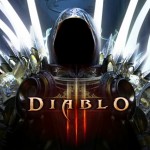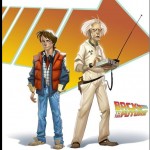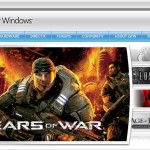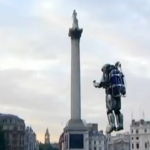Diablo III brings next level Combat
Cutting through hordes of demons is a cornerstone of the ‘Diablo’ series, but Blizzard are taking battle to the next level in ‘Diablo III’, adding a slew of new creature behaviours to make sure combat is more fast-paced and tactical than ever.
One of the primary objectives for ‘Diablo III’ is to make encounters with the grotesque beasts and demons of the ‘Diablo’ universe even more tactically interesting than they’ve been in previous games. The challenge lies in doing that without removing the accessibility, speed, and forward momentum that the series is known for. Here’s how Blizzard plan to accomplish that goal.
First, they’ve summoned forth a malevolent throng of new, more diverse monster types. As you battle through the environments, a seemingly endless tide of monsters will pursue you. Your decision to fight (or run) and the order in which you hew through a screen full of enemies will affect the pace and focus of combat.
For example, when you first see the unnerving Vessels - human cultists who’ve given their bodies over to demonic possession - you’ll notice that they stand numbly in place, tapping their staves on the ground and seemingly ignoring you. Yet that doesn’t mean that you can ignore them. Within an indefinite amount of time, the monstrosities possessing the Vessels will tear through the flesh of their living hosts and emerge onto the battlefield, utterly consumed by rage and hell-bent on inflicting grievous harm.
When encountering untransformed Vessels, it’s in your best interest to kill them as fast as possible - but trying to accomplish this can put you in the centre of a melee, or take your focus off of other targets who’ll savage you in the meantime. It may not seem very heroic to kill first and ask questions later, but the fate of Sanctuary is at stake - and demon-slaying is not for the faint of heart.
Second, every monster in ‘Diablo III’ has been categorised, regardless of type, by its behaviours. By behaviours, they mean how the monster emerges onto the battlefield and how it engages you in the moments before you send it to a bloody grave. For example, “big hit” is the internal name for an interesting, classic monster behaviour that you’ll encounter in various forms. “Big hit” monsters make very telegraphed, obvious, and often slow attacks that do a great deal of damage if they hit you. These attacks can be simple to avoid, but when dealing with tight quarters or other mobility-affecting variables, avoidance isn’t always easy.
Individual monsters can be dispatched carefully and cautiously, but when they work together, the circumstances can become dire. At a particular point in the game, you might find yourself in a desert, battling through a swarming mass of Fallen. As the Fallen surround you, threatening to hold you in place and dogging your steps, Sandwasps emerge from the swirling sands, shooting slow-moving, high damage projectiles. The wasps’ attacks slowly eat away at your life, and the noose around your hero’s neck tightens - you need to kill the wasps, or at least move, or you’ll die, but the living wall of Fallen is clamouring for your attention, and there are so many projectiles in the air that you’ll have to weave through them as you move away.
Of course, this is the perfect time for a Dune Dervish to erupt into your field of vision, its blades spinning in a whirling frenzy. Attempting to attack it in this state is dangerous - it’ll reflect your ranged attacks and slash you if you try melee attacks. If it manages to close in, it’ll deliver massive damage, maybe even killing you outright. Your death is inevitable… unless you act swiftly and carefully.
You move between tight clusters of rocks so that the Fallen can’t swarm you from all sides. You prioritise your targets, choosing carefully between the foes that trap you, the foes that slowly peck away at your life, and the sluggish, but heavily armoured threat. And then, you let fly with some surprising manoeuvres of your own.
Part of making monster encounters more interesting rests on the shoulders of the monsters themselves - but it’s just as important that you, the hero, is prepared for exciting combat. Every class in ‘Diablo III’ is a ‘DPS’ class, and damage output is vitally important, but no matter your build, you can customise your defensive skills as much as your offensive ones. Each hero has a significant arsenal of defensive skills - Frost Novas, Mirror Images, stunning Ground Stomps, blinding Assaults, Lethal Decoys that taunt foes away - and, without a limitless supply of healing potions, it’s critical that you use them carefully to stay alive.
As you encounter new monsters in subsequent acts, events, and quests, you’ll need to keep your combat strategy fluid. When distinct, diverse monsters coordinate their attacks, you can’t repeatedly use the same ability to achieve a hollow victory. Just as importantly, it means that you’ll experience engaging, frenetic battles - the kind that challenge your mind as much as your reflexes.
| Print article | This entry was posted by SirDyl on December 28, 2010 at 4:58 pm, and is filed under Gaming. Follow any responses to this post through RSS 2.0. You can leave a response or trackback from your own site. |











